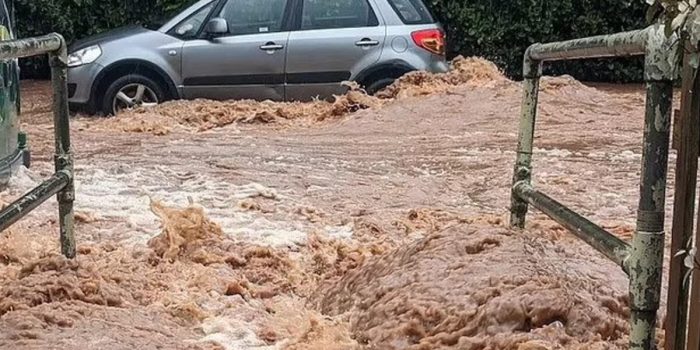A recently discovered fault line, the XEOLXELEK-Elk Lake Fault (XELF), stretching approximately 45 miles through British Columbia in Canada, poses a potential tsunami risk to over a million Americans in the northeastern US, according to a study published in the journal Tectonics.
Unearthed by a team including Nick Harrichhausen, a postdoctoral researcher at the Université Grenoble Alpes in France, the fault’s geological characteristics, specifically its dip-slip nature where rock blocks move vertically, could trigger a significant earthquake in Canada. Such an event may result in a tsunami affecting the Georgia Basin area, including parts of Washington and British Columbia.

The XELF has historical significance, with evidence suggesting it hosted a major earthquake between 4,700 and 2,300 years ago, measuring between 6.1 to 7.6 on the Richter scale. Given its proximity to urban areas, the potential impact of a similar or lesser magnitude earthquake today could be devastating. Harrichhausen emphasizes the difficulty in predicting the timing of such an event but encourages preparedness, considering the fault’s active history.
The Georgia Basin, encompassing cities like Bellingham, Seattle, Tacoma, and Olympia in the US, as well as Vancouver, Victoria, and Whistler in Canada, could be directly affected. Moreover, there is concern that the fault might connect to the Devils Mountain fault in Washington State, extending the risk to the United States. The study also suggests that even if a rupture doesn’t extend across the border, the northern Puget Sound area could feel the impact of a large earthquake on the XELF.

To uncover the fault’s history, researchers dug a trench across it, relying on magnetic field changes in rocks to identify signs of earthquakes and fault line shifts. Minerals in rocks exhibit different magnetism levels, aiding in the determination of whether rock formations formed simultaneously or were disrupted. The study, although limited in predicting future events due to the variability in earthquake recurrence intervals, emphasizes the need for further research to better understand the hazard posed by the XELF.
In terms of preparation, Harrichhausen recommends earthquake-ready measures, including securing furniture and appliances, creating a disaster plan, organizing supplies for self-reliance for at least 3 days to 2 weeks, and taking steps to minimize financial hardship. When an earthquake occurs, he advises people to follow standard safety protocols: DROP, COVER, and HOLD ON. As communities in the northeastern US potentially face an increased tsunami risk, staying vigilant and prepared becomes crucial.


